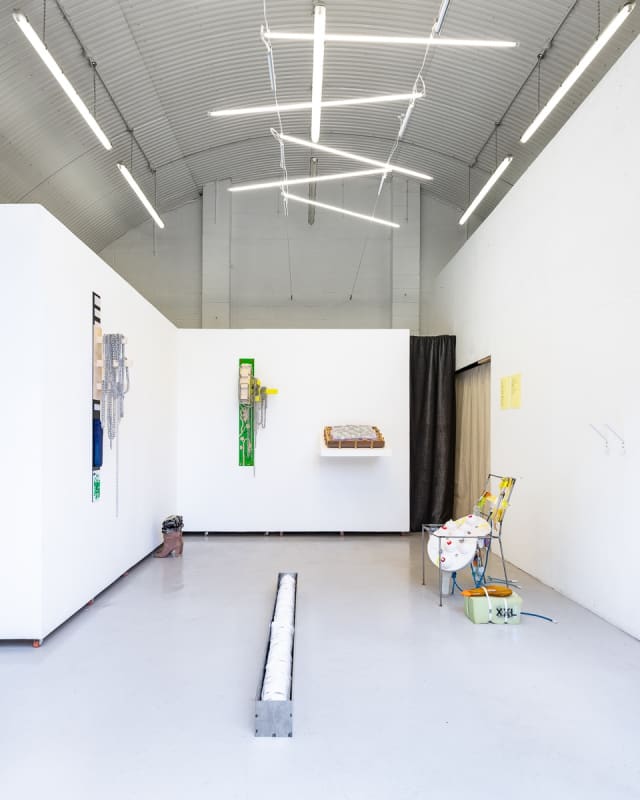We are, these days, extremely proficient in expressing our preferences. Do you like it? Social media is fixated on keeping count of our approvals, and, such is the ubiquity of the thumbs-up, it is hard to not seek the same level of endorsement in non-digital life.
But 'Do I like it?' leads to a deadend. It polarises experience, as if everything can be divided into disappointment and satisfaction. So what if, all along, we have been asking ourselves the wrong question..?
Observing is a fundamental activity. We look at what's around with 'eyes like a hawk' scouring for familiarities and similarities, not disappointments and satisfaction, and asking ourselves 'What is it like?’.
To find a simile is to make a connection, and to make a connection is to reveal something. On reading and hearing similes our minds work to delve deeper, and even the most banal occurrences are rendered surprising and more lucid from irregular comparisons. At the beginning of T.S. Eliot’s poem The Love Song of J Alfred Prufrock he describes a listless evening, ‘Spread out against the sky/ Like a patient etherised upon a table’ and we are excited to discover if the patient will ever recover. It's a very upmarket way of saying 'now read on’…
‘Like A Sieve’ – with its allusion to half-forgotten memories – is an exhibition of collage, sculpture, simulacra, pastiche. And, of course, similes.
About the artists
Jude Crilly.For ‘Like A Sieve’, Jude will be presenting two new works, ‘bon pied bon œil’ and ‘tulpa host’, which collage hand-woven aluminium chains, found imagery and her own texts on complexly-made wall sculptures. The materials Jude uses – oregon pine and blue ash woods (stained with dyes from own-grown mallow and woad flowers), powder-coated steel, aluminium and lasercut perspex - become surfaces for expanded drawing, what she refers to as ‘moodboards’.
*As an insight into her thinking, Jude has chosen a found image from her panelled work ‘Ribbons’ of a cat wearing trainers.
James Jessiman. For ‘Like A Sieve’, James presents his newest work ‘Found, Taken’ – a chiselled plaster relief displayed on a bed of hay and encased in a hand-made walnut box frame. The work takes inspiration from Mark Fisher’s essay on cult horror writer HP Lovecraft, ‘The Out of Place and the Out of Time’ – James’ work is anachronistic and has the illusion of having been excavated from centuries ago, with marks where it has been 'dug up' visible on the surface.
*As an insight into his thinking, James chooses a photograph he made in Georgia, of a carving in the bell tower of a 14th century church on Mount Kazbegi.
Nathaniel Faulkner. For ‘Like A Sieve’, Nathaniel is presenting a sculpture from initial research of the site Seahenge, where a vast upturned tree stump from the Early Bronze Age was found in 1998 on the Norfolk coast. Ruminating on the mythology of trees and our relationship to the environment, his work ‘Field’ – a facsimile of a silver birch tree cast in Jesmonite and nestled in an open steel casket, instills formalist techniques made by minimalist artists such as Anne Truit, Carl Andre and Donald Judd.
*As an insight into his thinking, Nathaniel selected this image of a Termite Cathedral found in Australia which he inverted to view upside down, like the upturned stump at Seahenge.
Madeleine Pledge. For ‘Like A Sieve’, Madeleine is showing a new sculpture from her series ‘Be Soft But Not Too Soft’. Her boots, hand-moulded in unfired clay, reference the repeated unravelling curves on Bridget Riley’s painting ‘Fall’, echoed here by folding, tucking and pleating in clay. ‘I've been thinking about the shared rhythm of their surfaces as frequencies, speeds, modulations between action and inaction, productivity and stillness, cycles of boom and bust, and inequitable flows of capital,’ she says.
*As an insight into her thinking, Madeleine has chosen a photograph of artist Pauline Boty hanging her work ‘Painting’ at the headquarters of the Trades Union Congress on the 13th June 1962.
Alexei Alexander Izmaylov. Alexei’s sculptures are made from a complex array of materials from PVC, climbing ropes, powder-coated steel, neon – the list goes on, often playfully pastiching from art history. For ‘Like A Sieve’, Alexei is showing two new works inspired by artist Franz West’s iconic, ‘Uncle Chair’ series, equipped with acutely detailed features and a supported wall hanging.
*#izmayloveismylove
Evie Ward (poet and writer). For the exhibition, Evie will show a site-specific work that she is writing at Kupfer in the lead-up to Like a Sieve opening. This work considers touch, time and the environment in which it is written, keeping an openness to what will be shown in the exhibition.
*Evie’s poem ‘Fray’ was written for the support hand-out.
Reading List
'This Room and Everything in it', The City In Which I Love You – Li-Young Lee
'Orientations: Toward a Queer Phenomenology' – Sara Ahmed
'Chapter 7', We Defy Augury – Hélène Cixous, trans. Beverley Bie Brahic
Agua Viva – Clarice Lispector
'Often I Am Permitted to Return to a Meadow', The Opening of the Field – Robert Duncan
After Lorca – Jack Spicer
Night – Etel Adnan
'A New Refutation of Time', Jorge Luis Borges, 'The Mysterious Power of the Infinitesimal', Eliane Radigue, 'Common Time’, F.R David – Will Holder and Paul Abbott
'The Old Fools', Collected Poems – Phillip Larkin
'Le Savon', ‘Snail’, Selected Poems – Francis Ponge
'Words Purely Physical', Cronicas – Clarice Lispector
Writing – Marguerite Duras
Bluets – Maggie Nelson
Hotel Palenque – Robert Smithson
'Objects Beyond Objecthood’ – Briony Fer
Sky Burial – Peter Gizzi
Happiness – Jack Underwood
Limbo – Dan Fox
'Peanut Butter', 'April Noon', 'What Tree Am I Waiting', I Must Be Living Twice - Eileen Myles

